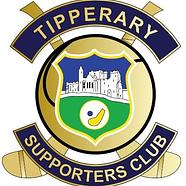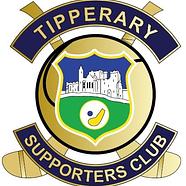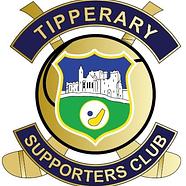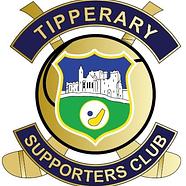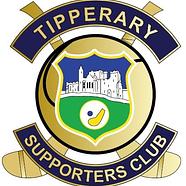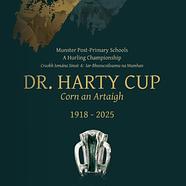WESTSIDE
A New Year is usually synonymous with new beginnings, accompanied by renewed hopes
and raised expectations for the season ahead – or maybe not. Tipperary’s stock is on the
floor at the moment; our hurling expectations have never been lower heading into a new
calendar.
We had hoped to get an early glimpse of panellists at Templemore on Saturday last, but
Clare beat an early retreat from the venue, their management, it seems, unhappy with the
frosty underfoot conditions. It led to many fans making a U-turn on their way to the game;
the rest of us arrived to be greeted by the disappointing news.
The town goal area did look a bit icy but I’ve often seen games played in far worse
conditions. One of the worst of the lot was the 2012 Munster club decider at Pairc Ui
Chaoimh where Thurles Sarsfields beat De La Salle on a pitch that was frozen rock-solid
throughout.
I’ve no doubt Saturday’s game would have been played if it was a Munster league tie but
the voluntary nature of the venture made it easier for Clare to walk away. It was particularly
disheartening for the hard-working committee who arranged the event - and the worthy
charity it was designed to serve.
Anyway, there’s a game against Laois planned for the same venue on Tuesday January 14,
which will be another fund-raiser for Mary’s Meals; and there’s mention of a further game
against Dublin ahead of league commencement on January 26.
All of this is set against the background of a very subdued mood in Tipperary hurling circles.
Not since the famine years of the seventies have expectations been so low among the
public. You even hear some wonder if the record of at least one All-Ireland win every decade
will survive the 2020s.
It’s a bleak scenario, one that has been developing since 2019. As the golden generation of
All-Ireland winners slipped away, the gaps they left behind remained unfilled. This winter
‘Bonner’ Maher and Dan McCormack joined the queue of retirees, so that Noel McGrath
remains the last of the 2010 heroes still standing.
Others too are unavailable. Cathal Barrett is out of favour with the management and Barry
Heffernan and Mark Kehoe have opted to travel this year. In the circumstances the impact
of every defection is enlarged given the shortage of comparable replacements.
It all leads to a renewed focus on our underage teams. There is a long-held view in Tipperary
that underage happenings have an inevitable follow-through at senior level. The minor
drought from 1959 to 1976, for example, was a major cause of the senior famine of the
seventies.
Then, underage successes between 1976 and ’85 – four U21s and three minor wins – fuelled
the senior breakthrough of the late eighties. More recently the minor double of 2006/07
was the main driver behind the senior prominence of the 2009/19 period.
However, a different dynamic appears to be at play now. Our underage achievements over
the past decade have been decent with three minor wins and two U21/20s. The reduction
of the minor age to 17 probably dilutes its impact somewhat, but still, winning underage
championships ought to have an impact at the higher level.
But has it? For the minors of 2022 and 2024 it’s still too early to make a judgement but
previous minor and U21/20 wins over the past ten years haven’t yielded the dividend we
had hoped for. Some players have come through, and they deserve recognition, but not
enough in either quality or quantity.
It should lead to a certain reassessment of the underage model. Galway, for instance, have
developed the knack of winning minor titles – ten since the turn of the century including
four-in-a-row from 2017 to 2020 – but the pay-off at senior level has been very poor. The
four-in-a-row teams, for example, have produced very few seniors and it’s notable that as a
county they are re-evaluating the entire process.
Ultimately, underage success must be viewed as a grounding for potential seniors – and
little else. It should never be an end game but rather part of a continuum where players are
developed with an eye to a senior future. That should influence the type of players who are
progressed through the ranks and it should also lead to significant co-ordination between
the different management teams. But does it?
For the moment Liam Cahill and company are limited to what’s available. Their 45-man
panel announced a few weeks back shows significant change from last year with 16 new
faces in the mix. That includes a handful of U20s who have been promoted, though nobody
should be expecting wonders from players of such a young age.
Given financial constraints, seven of that panel will be released ahead of the league start,
reducing the overall number to 38.
The management faces a particularly difficult task in trying to assemble a competitive team
for the season ahead. Liam Cahill spoke with characteristic honesty in a pre-Christmas
interview on local radio, accepting in particular the failings and shortcomings from last year.
He faced criticism in 2024 for not developing a more stable line-out as the year unfolded.
Too much chopping and changing in both positioning and personnel wasn’t helpful to
overall team stability and the manager has accepted that criticism as valid. Expect a
different approach this time.
Mind you I also see the other side of that particular coin. It’s difficult to stick with players if
they are not performing in a particular position. I guess trying to find the balance is the
issue, being patient without being over indulgent.
Liam Cahill was very strong on the lack of spirit shown by the team last year and this goes to
the very heart of public annoyance. The Cork game was a particularly troubling experience
where too many seemed to raise the white flag. The Limerick match was similar. Genuine
fans can accept when the team isn’t good enough, but cannot tolerate a lack of spirit. On
which point another look back at our minor win in 2024 would be instructive for all.
Incidentally, I’ve made no secret of my belief that James Woodlock should have been
promoted to U20 this time. ‘There is a tide in the affairs of me which, taken at the flood,
leads on to fortune’. Shakespeare had it right, the tide was with Woody, but we made the
easy call rather than the right one.
Anyway, we’ll hope that both underage sides deliver in 2025 and thereby render the above
criticism redundant.
So, what are Liam Cahill’s targets for 2025? The seven-team division 1A of the league will be
brutally demanding; there are no soft touches in any of the six scheduled games, starting
with Galway in Pearse Stadium on January 26. The top two qualify for the final while the
bottom pair will be relegated. There’s the first target: avoiding relegation.
Thereafter, the Munster championship is another bearpit. Getting out of the province seems
a very ambitious (unreachable?) target. Realistically people wonder where we might find
any victory to avoid finishing bottom, as in 2024. A modest target then but surely reflective
of our present rating where the bookies have us second from the bottom, marginally ahead
of Waterford.
More important than winning, however, will be the nature of our performances. That’s the
ultimate target for 2025. It’s not so much a case of making Tipperary great again as making
Tipperary competitive again. If Liam Cahill and colleagues achieve that, then 2025 will have been a success
A New Year is usually synonymous with new beginnings, accompanied by renewed hopes
and raised expectations for the season ahead – or maybe not. Tipperary’s stock is on the
floor at the moment; our hurling expectations have never been lower heading into a new
calendar.
We had hoped to get an early glimpse of panellists at Templemore on Saturday last, but
Clare beat an early retreat from the venue, their management, it seems, unhappy with the
frosty underfoot conditions. It led to many fans making a U-turn on their way to the game;
the rest of us arrived to be greeted by the disappointing news.
The town goal area did look a bit icy but I’ve often seen games played in far worse
conditions. One of the worst of the lot was the 2012 Munster club decider at Pairc Ui
Chaoimh where Thurles Sarsfields beat De La Salle on a pitch that was frozen rock-solid
throughout.
I’ve no doubt Saturday’s game would have been played if it was a Munster league tie but
the voluntary nature of the venture made it easier for Clare to walk away. It was particularly
disheartening for the hard-working committee who arranged the event - and the worthy
charity it was designed to serve.
Anyway, there’s a game against Laois planned for the same venue on Tuesday January 14,
which will be another fund-raiser for Mary’s Meals; and there’s mention of a further game
against Dublin ahead of league commencement on January 26.
All of this is set against the background of a very subdued mood in Tipperary hurling circles.
Not since the famine years of the seventies have expectations been so low among the
public. You even hear some wonder if the record of at least one All-Ireland win every decade
will survive the 2020s.
It’s a bleak scenario, one that has been developing since 2019. As the golden generation of
All-Ireland winners slipped away, the gaps they left behind remained unfilled. This winter
‘Bonner’ Maher and Dan McCormack joined the queue of retirees, so that Noel McGrath
remains the last of the 2010 heroes still standing.
Others too are unavailable. Cathal Barrett is out of favour with the management and Barry
Heffernan and Mark Kehoe have opted to travel this year. In the circumstances the impact
of every defection is enlarged given the shortage of comparable replacements.
It all leads to a renewed focus on our underage teams. There is a long-held view in Tipperary
that underage happenings have an inevitable follow-through at senior level. The minor
drought from 1959 to 1976, for example, was a major cause of the senior famine of the
seventies.
Then, underage successes between 1976 and ’85 – four U21s and three minor wins – fuelled
the senior breakthrough of the late eighties. More recently the minor double of 2006/07
was the main driver behind the senior prominence of the 2009/19 period.
However, a different dynamic appears to be at play now. Our underage achievements over
the past decade have been decent with three minor wins and two U21/20s. The reduction
of the minor age to 17 probably dilutes its impact somewhat, but still, winning underage
championships ought to have an impact at the higher level.
But has it? For the minors of 2022 and 2024 it’s still too early to make a judgement but
previous minor and U21/20 wins over the past ten years haven’t yielded the dividend we
had hoped for. Some players have come through, and they deserve recognition, but not
enough in either quality or quantity.
It should lead to a certain reassessment of the underage model. Galway, for instance, have
developed the knack of winning minor titles – ten since the turn of the century including
four-in-a-row from 2017 to 2020 – but the pay-off at senior level has been very poor. The
four-in-a-row teams, for example, have produced very few seniors and it’s notable that as a
county they are re-evaluating the entire process.
Ultimately, underage success must be viewed as a grounding for potential seniors – and
little else. It should never be an end game but rather part of a continuum where players are
developed with an eye to a senior future. That should influence the type of players who are
progressed through the ranks and it should also lead to significant co-ordination between
the different management teams. But does it?
For the moment Liam Cahill and company are limited to what’s available. Their 45-man
panel announced a few weeks back shows significant change from last year with 16 new
faces in the mix. That includes a handful of U20s who have been promoted, though nobody
should be expecting wonders from players of such a young age.
Given financial constraints, seven of that panel will be released ahead of the league start,
reducing the overall number to 38.
The management faces a particularly difficult task in trying to assemble a competitive team
for the season ahead. Liam Cahill spoke with characteristic honesty in a pre-Christmas
interview on local radio, accepting in particular the failings and shortcomings from last year.
He faced criticism in 2024 for not developing a more stable line-out as the year unfolded.
Too much chopping and changing in both positioning and personnel wasn’t helpful to
overall team stability and the manager has accepted that criticism as valid. Expect a
different approach this time.
Mind you I also see the other side of that particular coin. It’s difficult to stick with players if
they are not performing in a particular position. I guess trying to find the balance is the
issue, being patient without being over indulgent.
Liam Cahill was very strong on the lack of spirit shown by the team last year and this goes to
the very heart of public annoyance. The Cork game was a particularly troubling experience
where too many seemed to raise the white flag. The Limerick match was similar. Genuine
fans can accept when the team isn’t good enough, but cannot tolerate a lack of spirit. On
which point another look back at our minor win in 2024 would be instructive for all.
Incidentally, I’ve made no secret of my belief that James Woodlock should have been
promoted to U20 this time. ‘There is a tide in the affairs of me which, taken at the flood,
leads on to fortune’. Shakespeare had it right, the tide was with Woody, but we made the
easy call rather than the right one.
Anyway, we’ll hope that both underage sides deliver in 2025 and thereby render the above
criticism redundant.
So, what are Liam Cahill’s targets for 2025? The seven-team division 1A of the league will be
brutally demanding; there are no soft touches in any of the six scheduled games, starting
with Galway in Pearse Stadium on January 26. The top two qualify for the final while the
bottom pair will be relegated. There’s the first target: avoiding relegation.
Thereafter, the Munster championship is another bearpit. Getting out of the province seems
a very ambitious (unreachable?) target. Realistically people wonder where we might find
any victory to avoid finishing bottom, as in 2024. A modest target then but surely reflective
of our present rating where the bookies have us second from the bottom, marginally ahead
of Waterford.
More important than winning, however, will be the nature of our performances. That’s the
ultimate target for 2025. It’s not so much a case of making Tipperary great again as making
Tipperary competitive again. If Liam Cahill and colleagues achieve that, then 2025 will have been a success


